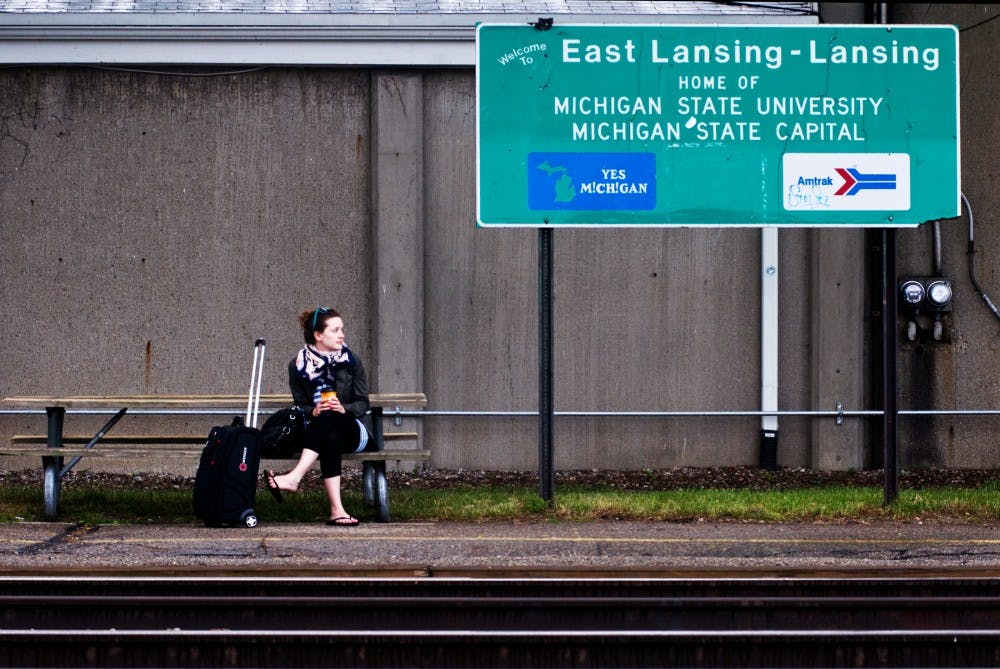Student train travelers might have a harder time commuting to and from campus as speeds of a branch of track servicing East Lansing slowed last week, even though the train line that runs through East Lansing has seen record ridership this year.
Maximum speeds on the section of the Blue Water line from Battle Creek, Mich., to Kalamazoo slowed to 25-60 mph, down from 79 mph previously, said Rudy Husband, a spokesman from Norfolk Southern Corp., the company who owns the section of track.
The track includes several West Michigan stops and also is en route to stations in and near Chicago.
Husband said the speeds are slowed indefinitely, meaning they could continue into the beginning of the fall semester — even amid the influx of students returning to campus near the end of August.
Ian Smith, an agent at the East Lansing Amtrak station, 1240 S. Harrison Road, said trains run consistently about a half an hour late since the speed dropped, but only about 15 of those minutes are due to the slower speeds on that segment of track.
“Fifteen minutes is the minimum they will lose,” he said.
Husband said someone else would have to pay the additional costs that accompany the higher speeds of passenger trains in order for them to be raised again.
“We, as a freight railroad, we have the responsibility to our shareholders to spend that money wisely,” Husband said. “We’re not in the business of subsidizing passenger operations.”
The slow-speed setting comes as the Blue Water line — which services the East Lansing station — has seen one of the highest ridership increases in the country this year.
From October 2010 to March 2011, the line felt a 25.2 percent increase in ridership, according to records provided by the Michigan Department of Transportation, or MDOT — the highest increase in Michigan, and one of the highest among short distance corridors in the U.S.
MDOT spokeswoman Janet Foran said the state currently has about $350 million in federal grants for railway improvements, a large portion of which will be used to upgrade the Wolverine rail line — which runs from Detroit to Chicago — to high-speed status, which also includes the section of the Blue Water line currently slowed between Battle Creek and Kalamazoo.
Elementary education sophomore Melissa Hunka, who is from Wheaton, Ill., a Chicago suburb, said even during the year the trains between Chicago and East Lansing were late frequently.
“My train has probably arrived on time once in Chicago,” she said, noting she never tells her parents a concrete time to expect her home because the train is always late.
Foran said the department is in the process of negotiating a purchasing deal with Norfolk Southern, and speeds will improve after the transaction, though it is not clear when the sale will be completed.
Support student media!
Please consider donating to The State News and help fund the future of journalism.
Discussion
Share and discuss “Train speeds lowered” on social media.

